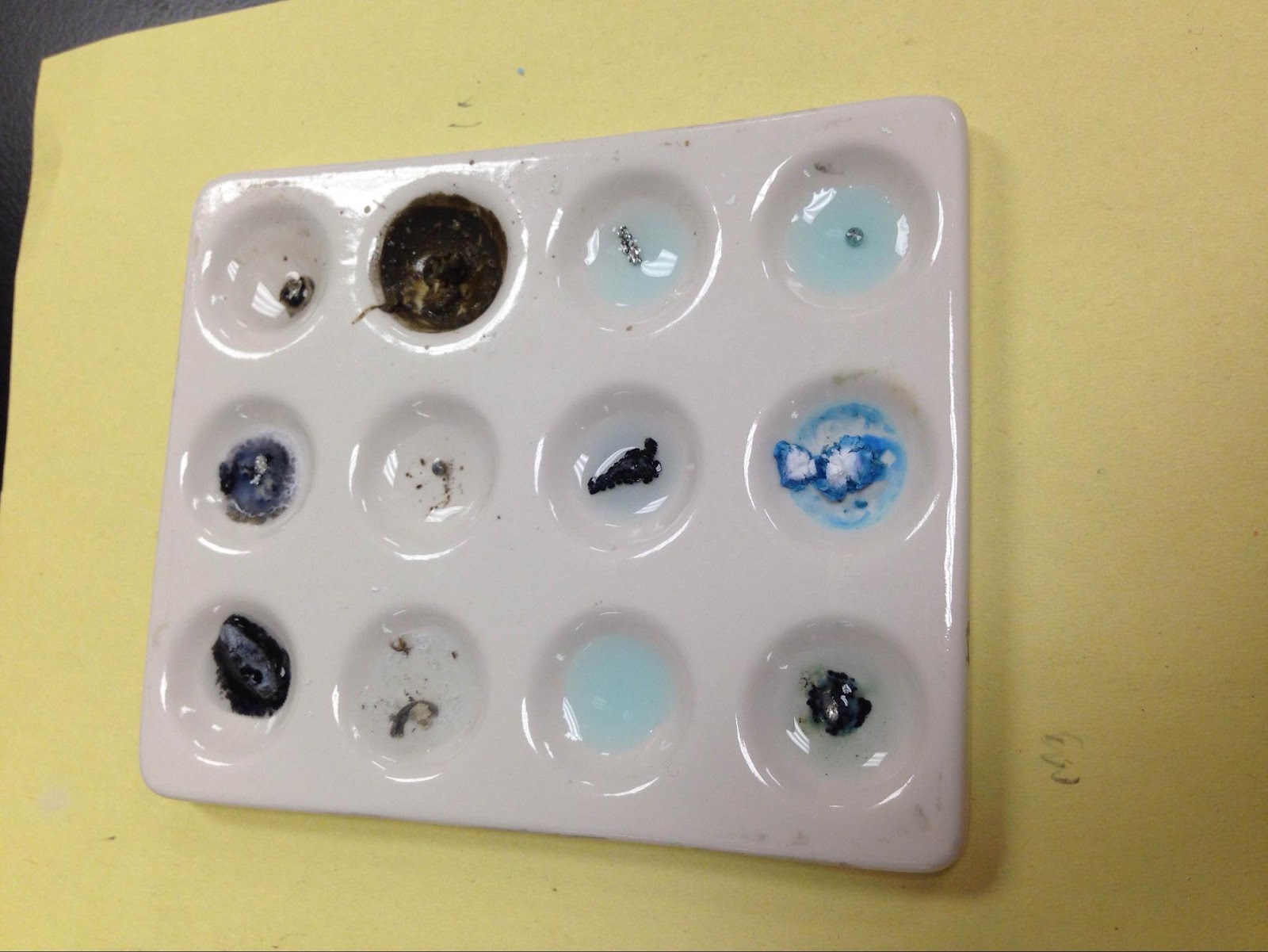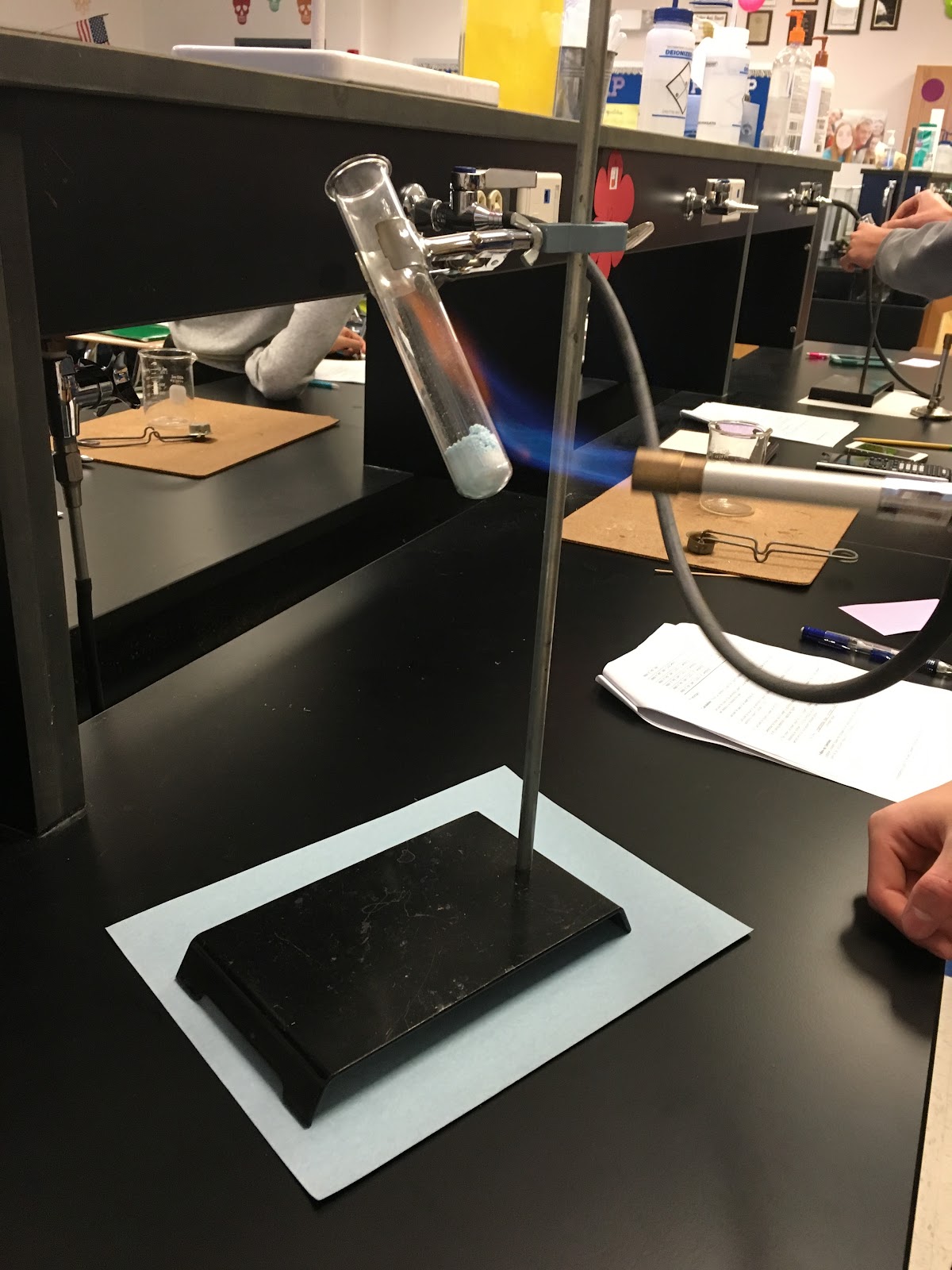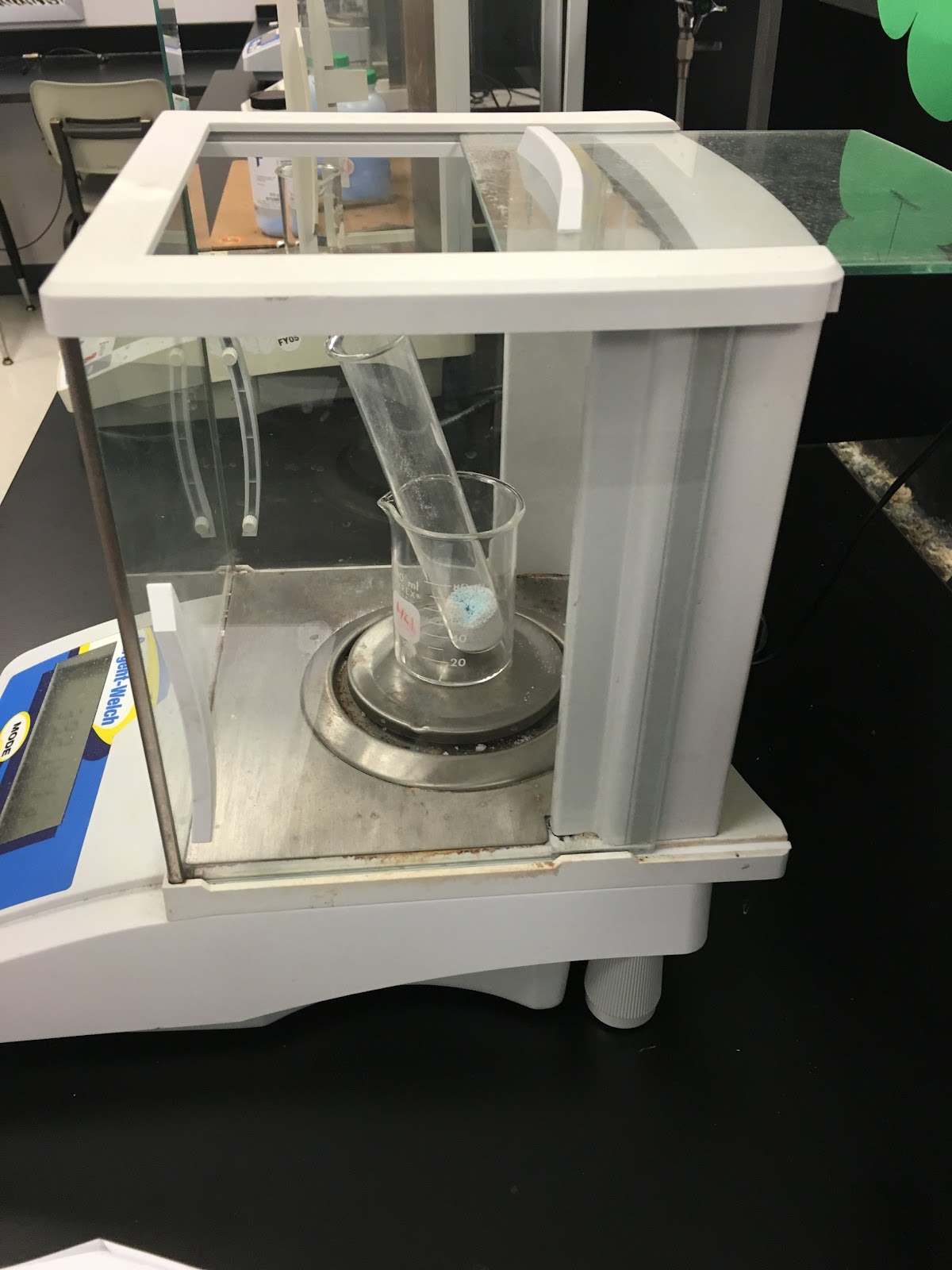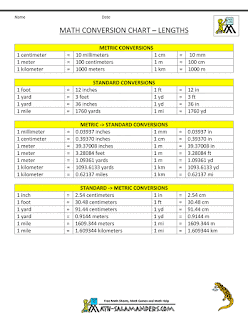In class we took notes over limiting reagents and excess reagents in chemical reactions. The limiting reagent is the reactant that runs out first when the product is being formed. Therefore, the maximum amount of the product that can be formed is equivalent to the limiting reagent. On the other hand, excess reagents are the reactants that are left over after the product has been formed in the chemical reaction. I found this link to be helpful in understanding limiting and excess reagents. In order to figure out which reactant is the limiting and excess reagent you have to convert both reactants into the product using given masses, moles, or representative particles. Whichever reactant converts to the lower amount of the product is the limiting reagent and the higher amount is the excess reagent. After calculating out which reactant is the limiting reagent, we can use that amount to determine the amount of the excess reagent that remains. Taking the amount the limiting reagent formed of the product, you convert it to the excess reagent and find the difference between it the given mass or moles. I found this link helpful to practice these problems.
Tuesday, December 15, 2015
Copper Chloride and Iron Lab
We finished our Copper (II) Chloride lab in class today. We started the lab by adding Copper (II) Chloride to water in a baby food jar. Once all of the Copper (II) Chloride was dissolved, a nail was placed in the solution. This nail stayed in the solution overnight and then was removed, rinsing the copper into the baby food jar. Next we drained the liquid out of the baby food jar and then rinsed it with hydrochloric acid and water. This link helped when we were trying to figure out what charge of iron was in our reaction.
Monday, December 14, 2015
Percent Yield
Our newest subject in stoichiometry is the percent yield of a chemical reaction. In order to calculate percent yield, the actual yield has to be given within the problem. The formula for percent yield is (actual yield/theoretical yield) x100 . Calculating the theoretical yield requires converting the limiting reagent into the desired product of the reaction. I found this link to be helpful in understanding and calculating percent yield.
Wednesday, December 9, 2015
Stoichiometry
In class, we took our first set of notes on stoichiometry. This link was helpful in understanding the concept of stoichiometry and stoichiometry problems. We learned how to convert a given mass of a reactant into the mass of product, or using the mass desired mass of the product, calculating how much of a reactant is needed. This link helped me to practice these mass to mass conversions.
Friday, December 4, 2015
Redox Reactions
In redox reactions, electrons are transferred from the metal to the non-metal. If a species loses electrons it is oxidized; whereas, if a species gains electrons it is said to be reduced. An easy way to remember the difference between oxidation and reduction is OIL RIG. OIL RIG stands for Oxidation Is Loss and Reduction Is Gain, applying to the transfer of electrons that takes place during these reactions. The species that is oxidized in a redox reaction is also called the reducing agent. Similarly, the specie that is reduced in a redox reaction is also called the oxidizing agent.
Single-replacement
In a single-replacement reaction, the metals in the reactants change places. These reactions are based on reactivity series which show metals from most reactive to least reactive.
Synthesis
A synthesis reaction occurs when two or more reactants form one product.
Decomposition
Decomposition is a reaction in which one reactant produces two or more products.
Combustion
When a hydrocarbon reacts with oxygen in order to always produce carbon dioxide and water, it is a combustion reaction.
I found This to be helpful in practicing redox reactions
Some practice for Classifying reactions was helpful as well
These Practice Redox problems were beneficial in understanding this concept as well
Single-replacement
In a single-replacement reaction, the metals in the reactants change places. These reactions are based on reactivity series which show metals from most reactive to least reactive.
Synthesis
A synthesis reaction occurs when two or more reactants form one product.
Decomposition
Decomposition is a reaction in which one reactant produces two or more products.
Combustion
When a hydrocarbon reacts with oxygen in order to always produce carbon dioxide and water, it is a combustion reaction.
I found This to be helpful in practicing redox reactions
Some practice for Classifying reactions was helpful as well
These Practice Redox problems were beneficial in understanding this concept as well
Wednesday, December 2, 2015
Chemical Reactions Lab
In class, we were able to perform a chemical reactions lab in order to determine the reactivity series of the different elements. After determining the reactivity series for the different metals, we calculated the net ionic equations of the reactions that occurred during the lab. The reactivity series goes from the most reactive on the top, to the least reactive on the bottom. Those that are higher up on the reactivity series react more with other metals; whereas, those on the bottom react with less metals.

Monday, November 30, 2015
Acid Base Reactions
Acid-base reactions are reactions that form water as a product. The water that is formed as a product is the driving force of these reactions. Along with the production of water, acid-base reactions also produce a "salt", a cation of the base and anion of the acid.
In acid-base reactions, strong acids will produce H+ as a product. Strong acids can also be determined by looking at whether it is HCL, HBr, HI, or if the oxygen's outnumber the hydrogen's by two or more.
Strong bases contain a hydroxide (OH-) anion in the reactants of an acid-base reaction. When any Group 1 or Group 2 metals are with the OH- anion, it is a strong base.
However, when there is a weak acid or base in an acid-base reaction, the weak acid will not protonate completely and the weak base won't completely.
This is helpful in studying characteristics of strong acids and bases
I found this video to be helpful
In acid-base reactions, strong acids will produce H+ as a product. Strong acids can also be determined by looking at whether it is HCL, HBr, HI, or if the oxygen's outnumber the hydrogen's by two or more.
Strong bases contain a hydroxide (OH-) anion in the reactants of an acid-base reaction. When any Group 1 or Group 2 metals are with the OH- anion, it is a strong base.
However, when there is a weak acid or base in an acid-base reaction, the weak acid will not protonate completely and the weak base won't completely.
This is helpful in studying characteristics of strong acids and bases
I found this video to be helpful
Saturday, November 28, 2015
Solubility Rules Lab
The solubility rule lab was performed today in class in order to see how solubility rules affect the different chemical reactions. Using the solubility rules, we predicted which chemicals would cause a reaction when they were placed into the wells together. In the pictures below, there is the list of solubility rules and some of the chemical reactions that took place.
This quiz is helpful in practicing using solubility rules
Monday, November 23, 2015
Double replacement reactions
The first set of class notes for this unit were over double replacement reactions.
A double replacement reaction is when two compounds react together to form two new compounds. In these reactions, the positive ions replace each other.
The general formula for double replacement reactions is: AB + CD → AD + CB
Double replacement reactions have four different driving forces:
- Formation of gas
- Formation of water
- Formation of a solid
- Transfer of electrons
Monday, November 16, 2015
Empirical and Molecular Formulas
In class, we learned about empirical formulas and molecular formulas. These two different types of formulas have different characteristics; however, they sometimes are the same. An empirical formula is the lowest number ratio of elements in a compound- it can't be reduced. Molecular formulas are the ratio of masses in whole numbers of the empirical formula. Since molecular formulas are ratios of masses and whole numbers, they can be the same as its empirical formula. In order to calculate An empirical formula, you take the mass percentage of the element and change it to grams. Next, divide the grams of each element by the molar mass, found on the periodic table. After having calculated the moles, the mole ratio is calculated and put into the lowest mole number. The answer can either end with a whole number or a decimal that can be multiplied by a whole number into a whole number.
Some links I found helpful in working on empirical and molecular formulas:
Empirical Formula
Molecular and Empirical Formulas
Formula Practice
http://quantummechanics.mchmultimedia.com/2011/general-chemistry-general-chemistry/004-empirical-formula-in-chemistry/
http://slideplayer.com/slide/235679/
Some links I found helpful in working on empirical and molecular formulas:
Empirical Formula
Molecular and Empirical Formulas
Formula Practice
Thursday, November 12, 2015
Hydrate Lab
In class we performed the Formula of a Hydrate Lab in order to determine the formula of the hydrate CuSO4 * nH2O. To determine the formula of CuSO4 * nH2O, we took the mass of the test tube and about 2 cm of Copper (II) Sulfate, then using a Bunsen burner, we heated most of the water out of the hydrate. After the water was driven off, we took the mass again to be used for the anhydrous and then calculated the mass of the water driven off. Then we were able to convert the anhydrous and water driven off into moles in order to find n.



A practice link for hydrates:
Determine the Formula of a Hydrate
A practice link for hydrates:
Determine the Formula of a Hydrate
Wednesday, November 4, 2015
Chemical composition
Today we took our first set of notes over our new unit, chemical composition. This section shows how you can convert from representative particles to moles, moles to representative particles; moles to mass, mass to moles; volume at STP to moles, and moles to volume at STP. By using these conversions, the number of moles, atoms and grams in an element can be determined. I find the mole road map we were given in class to be very helpful in converting between the different properties. The mole road map seems like it will be very beneficial throughout this unit.
http://mrdchemdwiki.wikispaces.com/Chemical+Quantities
Some helpful links for conversions:
Monday, November 2, 2015
Chemical Composition Pretest
Today in class, we took a pretest for our next unit, chemical composition. After taking the pretest for this unit, I know that I'll need to make sure I understand the concepts very well. With previous pretests I have recognized some information, even if I didn't know how to answer the questions; however, with this pretest I only recognized mol in some of the equations. And although I recognized mol in some equations, I have no idea how the mass of one mol of an element can be calculated.
Thursday, October 29, 2015
Dimensional Analysis
In class, we took notes covering dimensional analysis. Dimensional analysis is used to convert one quantity to another. By using conversion factors, we can calculate out the equivalent in the desired unit. In order to determine the equivalent in the desired unit, the sought for unit must be used in the numerator. The equation for dimensional analysis is the following: given units x (desired units/given unit)= the solved desired unit.
I found these links helpful for dimensional analysis:
http://www.alysion.org/dimensional/fun.htm
https://www.sophia.org/tutorials/dimensional-analysis-unit-conversion
https://www.sophia.org/tutorials/
dimensional-analysis-unit-conversion
I found these links helpful for dimensional analysis:
http://www.alysion.org/dimensional/fun.htm
https://www.sophia.org/tutorials/dimensional-analysis-unit-conversion
https://www.sophia.org/tutorials/
dimensional-analysis-unit-conversion
http://www.math-salamanders.com/metric-to-standard-conversion-chart.html
Sunday, October 25, 2015
Significant numbers
In class, we learned the difference between accuracy and precision, which is especially important in chemistry. Accuracy is the proximity of a measurement to the true value of a quantity; whereas, precision is the proximity of several measurements to each other. In other terms, accuracy depends on the technique and precision depends on how reproducible the measurement is. A measurement with accuracy usually also has a component of precision. In chemistry, significant figures are used to show the value of something being measured. Significant figures include zeros that are between whole numbers, zeros at the end of a number if there's a decimal point, all numbers in scientific notation, and all nonzero integers. With these significant figures, we can estimate one digit past the calibration of the instrument being used for the measurement. When adding or subtracting significant figures, the answer is rounded to the smallest number of decimal places present in the equation; on the other hand, multiplication and division are rounded out to the smallest number of significant digits in the equation.
I found some helpful links for determining significant figures and using them in problems:
http://chemistry.about.com/od/mathsciencefundamentals/a/sigfigures.htm
http://chemed.chem.purdue.edu/genchem/topicreview/bp/ch1/sigfigs.html
http://chemwiki.ucdavis.edu/Analytical_Chemistry/Quantifying_Nature/Significant_Digits
I found some helpful links for determining significant figures and using them in problems:
http://chemistry.about.com/od/mathsciencefundamentals/a/sigfigures.htm
http://chemed.chem.purdue.edu/genchem/topicreview/bp/ch1/sigfigs.html
http://chemwiki.ucdavis.edu/Analytical_Chemistry/Quantifying_Nature/Significant_Digits
Classification of Matter
In order to properly identify matter, there are a series of questions you have to go through.
This flowchart is very helpful in properly identifying matter as heterogenous, a homogenous mixture, a compound or an element.
Matter can go through different changes which can be identified as a physical or chemical change. With a physical change, the identity of the substance is the same but the state the substance is in changes. In the case of a chemical change, however, the change results in a different substance than the original. We also learned three techniques for separating substances: filtration, distillation, and chromatography. Filtration is used for the separation of solid substances, distillation is used for substances with different boiling points, and chromatography is used for liquids with a difference in polarity.
I found these links helpful for classifying matter:
http://www.chemprofessor.com/matter.htm
http://chemwiki.ucdavis.edu/?title=Textbook_Maps/General_Chemistry_Textbook_Maps/Map:_Brown,_LeMay,_%26_Bursten_%22Chemistry:_The_Central_Science%22/01._Introduction:_Matter_and_Measurement/1.2:_Classification_of_Matter
I found these links helpful for classifying matter:
http://www.chemprofessor.com/matter.htm
http://chemwiki.ucdavis.edu/?title=Textbook_Maps/General_Chemistry_Textbook_Maps/Map:_Brown,_LeMay,_%26_Bursten_%22Chemistry:_The_Central_Science%22/01._Introduction:_Matter_and_Measurement/1.2:_Classification_of_Matter
Thursday, October 8, 2015
Aspirin Lab
Yesterday we took the pre-lab quiz for our aspirin lab to see who got to participate in the lab. Out of those in the second group for the lab, only one set of partners passed the quiz. Everyone else just had a study hall an extra two days while the one set of partners conducted the lab. The pre-lab quiz contained a sentence directly from the lab packet, as well as, a question asking about the mass of the beginning substance and the drops of the liquid used in the lab. I didn't read the packet carefully enough to get the fill in the blanks for the sentences or to remember the mass of the additional things added to the original substance. For the next pre-lab quiz, I know I need to read the packet more carefully and more frequently in order to properly understand the information.
Thursday, October 1, 2015
Archaeology Lab
On Tuesday in class, my lab partner and I conducted an experiment to coincide with our current subject for notes, half-lives. During this lab, we had to cut out 567 squares out of paper given to us. These squares represented the number of atoms present. As we continued the experiment, we put all of the paper squares in a shoe box and shook them up. The squares that showed white were removed from the box and represented the decayed atoms. We did this another five times, going through six half-lives. After each half-life, we totaled up the number of decayed atoms and the number of radioactive atoms left to get our data for this experiment.
Friday, September 25, 2015
Beanium lab
September 22, 2015
Today we conducted an experiment to identify the average atomic mass of a newly discovered element, beanium. To identify the atomic mass, the first step was to count up all the beans in the sample as well as how many there were in each type of bean. This information allowed us to calculate the average atomic mass by multiplying each isotope by its mass abundance and adding them together. [(mass)(% abundance)]+[(mass)(%abundance)]= average atomic mass
Today we conducted an experiment to identify the average atomic mass of a newly discovered element, beanium. To identify the atomic mass, the first step was to count up all the beans in the sample as well as how many there were in each type of bean. This information allowed us to calculate the average atomic mass by multiplying each isotope by its mass abundance and adding them together. [(mass)(% abundance)]+[(mass)(%abundance)]= average atomic mass
Thursday, September 24, 2015
Radioactive Decay
Today in class, the lecture was over some of the different types of radioactive decay. These decays included alpha particle decay, beta particle decay, and gamma decay. Although I have seen and heard about alpha, beta, and gamma, I did not know what they pertained to, or what they did. I now know that they are radioactive reactions going on inside elements that can change the mass or atomic number of an element, or in the case of a gamma decay, just release photons without changing the mass or atomic number. During an alpha decay, an element's mass lowers by four, and it's number of protons decreases by two. In the case of a beta particle decay, an element does not experience any change in it's mass, however, it does experience an increase of one proton. The forms in which these decays take are helium nucleus for an alpha decay, an electron for a beta decay, and energy for a gamma decay. These types of radioactive decay are a common occurrence in elements.
Friday, September 18, 2015
Atomic Theories
On Wednesday, we started taking notes for our unit over atomic structure and radioactivity. The notes were over atomic theories, specifically those created by Dalton, Rutherford, and Thompson. Dalton's theory includes the following statements: all elements are composed of atoms; all atoms of a given element are identical; atoms of different elements are different; compounds consist of the atoms of different elements; and atoms are indivisible and can't be created or destroyed in a chemical reaction. Rutherford's theory consisted of of atoms containing a small, dense region, or the nucleus, which contained molecules of a positive charge, also known as protons. Thompson's theory entailed that atoms contained negatively charged molecules, or electrons.
Unit 2 Pretest
On Tuesday we took our Pretest for our second unit in pre-AP chemistry, atomic structure and radioactivity. Based on the Pretest, I think this unit is going to be harder than the last. With the last Pretest I recognized some of the material; whereas, I didn't recognize almost any material for this unit.
Friday, September 11, 2015
Naming Acids
I use this flowchart to help me correctly name acids. The flowchart has helped me memorize the different prefixes and suffixes used to name acids. Factors that determine how an acid is named are whether it contains oxygen, and if so, what the ending of the anion is. If the anion doesn't contain oxygen, it is named using the prefix hydro- and the suffix -ic. Depending on the ending of an anion that does contain oxygen, the suffix is different. For an anion that has the ending -ite, the acid is named with the suffix -ous. For an anion that has the ending -ate, it is named with the suffix -ic
Naming Binary Compounds
Thursday, August 20, 2015
Introduction
Hello and welcome to my Pre-AP Chemistry blog! My name is Erin and I'm both a swimmer and a runner. I run track and cross country, and swim for my school throughout the year. I also compete on a club swim team year-round. I come from a fairly big family and have been gifted with a great love of dogs. I hope you enjoy these pictures below and my blog!


Subscribe to:
Posts (Atom)





















